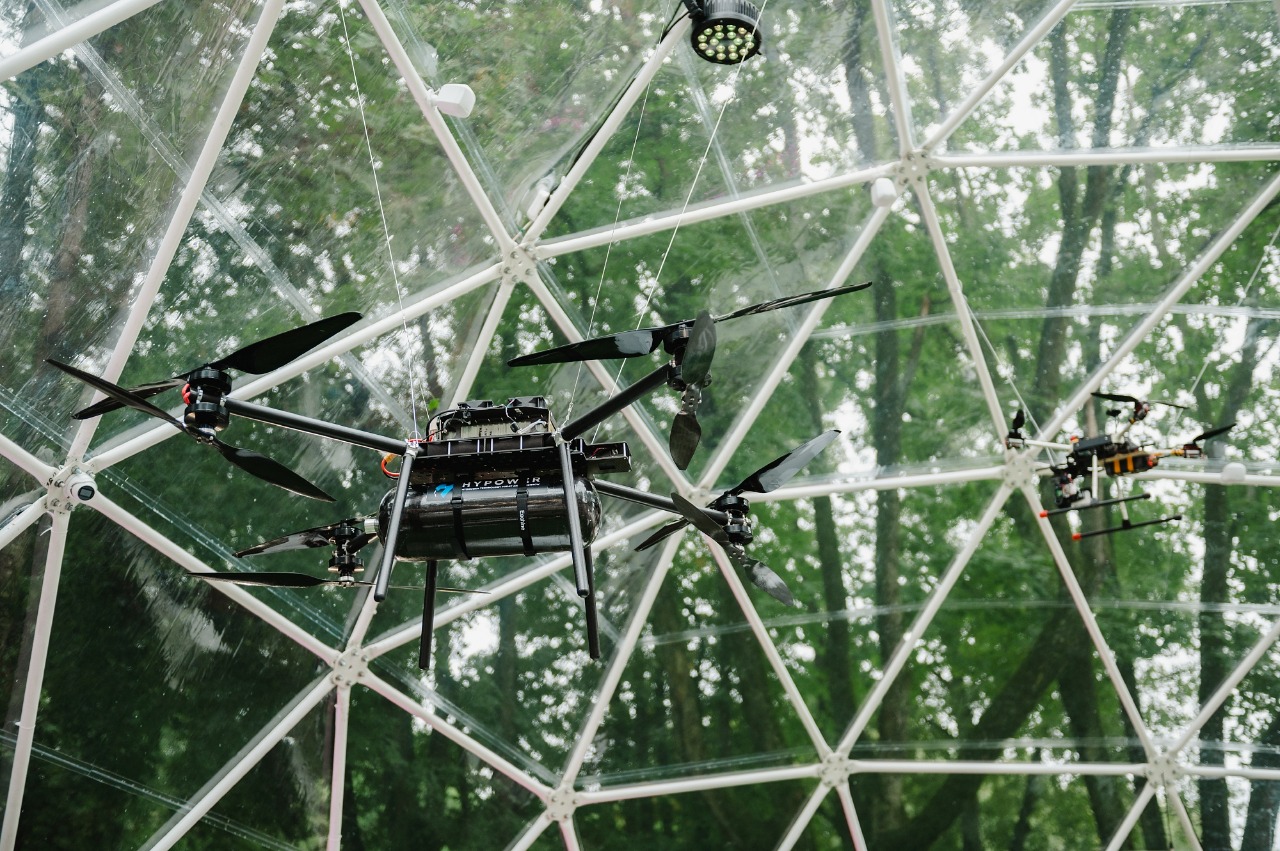Scientists of the St. Petersburg Federal Research Center of the Russian Academy of Sciences (SPC RAS) at the educational intensive "Archipelago 2121" being held in Veliky Novgorod, launched an installation representing the Center's developments in the field of agriculture. Visitors had a chance to see a"flowerbed" with highly effective fodder grasses, as well as a drone able to enhance the crops’ productivity with the help of a laser.
The installation is a sort of large area beneath the "Archipelago 2121" dome, decorated with plants raised by the Novgorod Research Agriculture Institute. Models of cows were installed on such a "pasture" as visual aids.
"Organizers of “Archipelago 2121” have asked us to arrange for an installation with our scientific achievements. We made a flower bed out of three types of our advanced products – fodder crops with high productivity: paiza, mogar and chumiza. The press was present at the intensive course and really liked our developments; we were asked to make a detailed presentation in regard to our work,” says a Senior Researcher of the Land Reclamation Department at Novgorod Research Agriculture Institute (SPC RAS branch) Olga Balun.
The grasses represented at the site are introducers - that is, their usual habitat are the regions of Southern Russia, and they are not typical for the North-West. However, scientists of SPC RAS have learned how to grow such crops on their experimental agricultural territories in the Novgorod region, and the content of substances useful from the point of animal husbandry is about twice as high as that of fodder grasses traditionally used in the North-West.
"In many respects, high productivity is gained due to the fact that we have significantly more precipitation than in the southern zones. It is quite possible to cover the need of animal husbandry for feed with such crops all year round. Such herbs are perfectly applicable as a feed for cattle. They are also suitable for livestock pasture maintenance, and for feeding in a stall. In addition, aesthetically they look beautiful, and can be used in design: to decorate flower beds, lawns," Olga Balun notes.
Another development that drew the visitors’ attention to the installation was a drone developed by roboticists of the St. Petersburg Institute for Informatics and Automation of the Russian Academy of Sciences (SPIIRAS-SPC RAS structural division) for the needs of agriculture. The device consists of a quadrocopter with an installed on laser. Thanks to special algorithms developed by scientists of SPC RAS, such a drone is able to independently move around a certain area where agricultural crops are grown, and treat them with a laser beam with special characteristics. Experiments of scientists have shown that such a procedure leads to a significant increase useful substances share in herbs used in agriculture.
"The installation demonstrates the possibilities for doing serious interdisciplinary research due to the integration of several institutes into a single Federal Research Center: particularly, in agriculture," explains Olga Balun.
